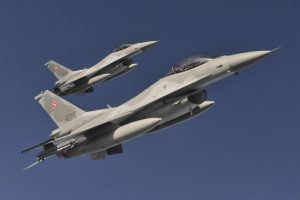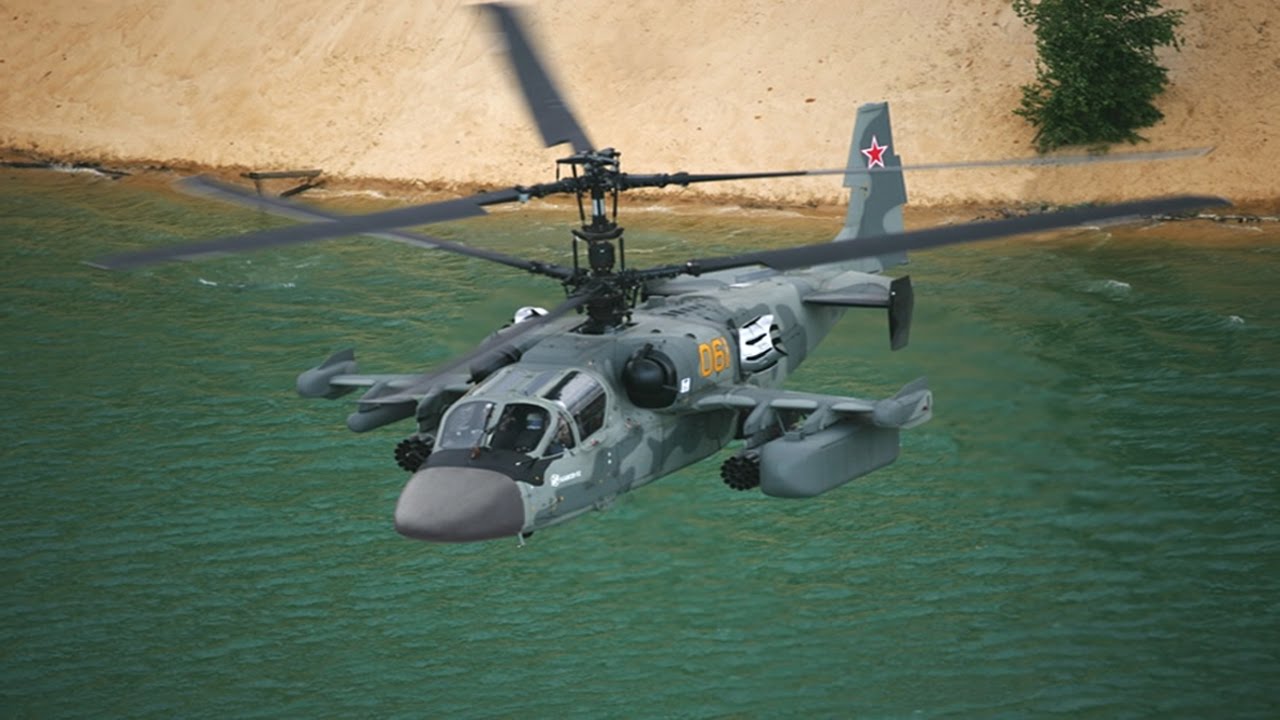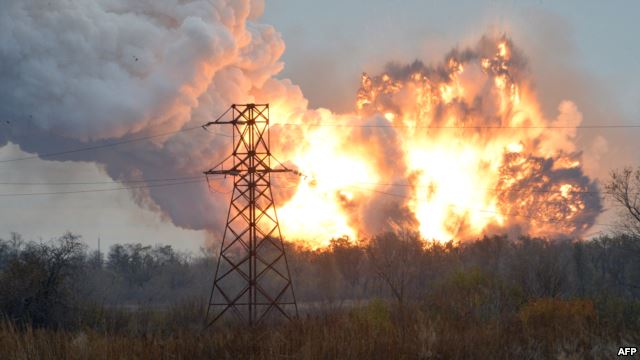Unlike Sweden, Poland has kept defense spending at 1.95% for the last decade, which is the bare minimum for a nation under threat. However, with a government debt of 49.9% of GDP and a budget deficit of 2.9%, Poland has little room to increase defense spending in the short term, especially as it is forced by the German-invented EU Convergence Program to keep its budget deficit permanently under 3%. Luckily, Poland’s economy keeps growing and growing: in 2015 it will grow by at least 3.2% allowing Poland to spend an extra €350 million on defense in 2016 without increasing its budget deficit. However, Poland should spend even more: raising its corporate income tax by 2% to 21% would provide Poland with an extra €900 million a year for defense, while still retaining the lowest corporate (and income) tax rate among the six big nations of the European Union.
Poland is the European state most at risk to be devastated by Russia, and yet Poland is not yet fully prepared to defend itself against such a fate. Even though no other European nation bar Greece fields an armored and mechanized force as powerful as Poland and no other nation bar Türkiye is buying as much modern weapons as Poland, there are still gaps in Poland’s military capabilities that need to the closed as soon as possible.
Most urgently, Poland’s army needs a modern long-range air-defense system with anti-ballistic missile capability. Admirably its army is already running the WISLA program to buy either the American MIM-104 Patriot or the Italian/French SAMP/T system. The SAMP/T is the more capable system, but buying MIM-104 Patriot Systems will score Poland points with American politicians. Currently American MIM-104 Patriots are based in Poland and therefore I assume Poland will buy the American system, also because France comes out as less reliable, see the (thankfully postponed) questionable decision to deliver two amphibious assault ships of the Mistral-class to Russia, whose only purpose, now after the occupation of Crimea, is to ease a Russian occupation of Gotland.
Besides the WISLA program, Poland’s army also runs the NAREW program to buy a mobile medium range anti-air missile system to defend its armored brigades and the HOMAR program to build an indigenous surface-to-surface rocket artillery system based on the American HIMARS multiple rocket launcher and the American MGM-140 ATACMS missile. As soon as the HOMAR enters service, Poland will be able to strike Russian anti-air missile systems, command centers, ballistic missile systems and other high-value targets 300km inside enemy territory. Finland intended to buy the MGM-140 ATACMS for its M270 MLRS systems, but canceled the deal under Russian pressure in March 2014. The massive pressure and plethora of threats Russia unleashed on Finland proves that Russian generals fear nothing more than precision guided missiles that can destroy Russian S-300 anti-air missile systems and thus open the way for Western air power to annihilate Russian ground forces.
But Poland’s army is still Europe’s shining light when it comes to preparing for war: it already bought nearly 2,700 Israeli-made Spike anti-tank guided missiles, is about to introduce the modern MSBS Radon assault rifle, has ordered 997 KTO Rosomak wheeled infantry fighting vehicles, has ordered the WLR 100 Liwiec artillery radar to spot Russian artillery positions, is starting production of the AHS Krab self-propelled howitzer for its armored brigades along the Kaliningrad border and is adding reserve personnel to augment its forces.

But some gaps in the Army’s inventory remain: first, there are way too few modern tanks, and the plan to introduce the light Polish-British PL-01 tank by 2018 is way too late. Based on the chassis of the Swedish CV-90, the PL-01 can enter production sooner and as Poland’s mechanized brigades desperately need a modern tracked infantry fighting vehicle (IFV) to replace the obsolete Soviet-made BMP-1, Poland should either license the Swedish CV-90 for production in Poland or develop an IFV variant of the PL-01. To protect its tanks and IFVs from anti-tank guided missiles, Poland should license Israel’s Trophy active protection system, which automatically recognizes and destroys incoming missiles and rocket-propelled grenades. Equipped with the Trophy system and a 120mm cannon, the PL-01 will easily defeat Russian tanks. At the same time, the production of the AHS Krab must be sped up and expanded from 72 howitzers to 240 howitzers to equip all of Poland’s mechanized and armored brigades. Last year Poland’s army started the KRUK program to acquire 30 modern attack helicopters within the next two years. Most likely Poland will buy the Italian A129 Mangusta designed by AgustaWestland as it could be built at Agusta’s PZL-Świdnik plant in Poland. But 30 attack helicopters are not enough. Poland should buy at least 48.
Poland’s navy is also buying equipment and upgrading its capabilities. Most recently it acquired Norway’s Naval Strike Missile for its Coastal Missile Squadron. Within this year Poland will launch a tender to buy three submarines capable to launch cruise missiles and has request American permission to acquire Tomahawk cruise missiles. However, the current plan by Poland’s military to buy a mere six anti-submarine warfare helicopters is way below what is actually needed. With Russian submarines likely to swarm the Baltic Sea in a Baltic war Poland will need at least 12 anti-submarine helicopters.
In a future war with Russia Poland’s navy will have three main tasks: defend the Polish coast from amphibious Russia landings, destroy Russian submarines and ships blockading Poland’s coast and destroy the German-Russian North Stream gas pipeline. Poland’s navy is adequately prepared for all three tasks, although replacing its two aging American-built Oliver Hazard Perry Class frigates with two modern air-defense frigates would greatly improve Poland’s ability to deny Russia air superiority in the Baltic Sea. Spain (Álvaro de Bazán-class), Germany (Sachsen-class), the Netherlands (De Zeven Provinciën-class) and Denmark (Iver Huitfeldt-class) currently build frigates armed with the American RIM-66M-5, RIM-161D, RIM-162 ESSM and RIM-174 Standard ERAM surface-to-air missiles, which give these frigates anti-air, anti-cruise missile and anti-ballistic missile capabilities with a radius of 240km. Additionally, all of these frigates are capable of firing Tomahawk cruise missiles against land targets 1,700 km away.
Alternatively, Italy and France build the Horizon-class frigates and FREMM frigates and the UK builds the Type 45 destroyer, which employ the same missiles as the SAMP/T system to shoot down enemy planes and cruise missiles in a radius of 120km. However, anti-ballistic missile and cruise missile land attack capabilities for these three classes are still in development. Overall, buying two modern air-defense frigates is an expensive item Poland will have to buy one day, as unlike Sweden with Gotland, Poland does not have an island 100km from its coast, which can act as an unsinkable platform for long-range anti-air missiles.

Poland’s air force is currently the service in need of the most investment. The Sukhoi Su-22 ground attack aircraft it fields is flying garbage, that has been retired nearly everywhere. Likewise Poland’s MiG-29 will need to be replaced with a more capable fighter in the coming years. As Poland already fields 48 American-made F-16C/D Block 52+ fighters, it would be wise to replace the Su-22 as soon as possible with 48 of the much more capable F-16E/F Block 60 variant. Not only does the Block 60 variant have a more powerful engine, more fuel capacity, better avionics and more hardpoints to carry weapons than older F-16 variants, it also has an internal AN/ASQ-32 IFTS ground targeting system and an AN/APG-80 Active Electronically Scanned Array (AESA) radar, which can search, track and fire at multiple air and ground targets simultaneously. Buying more F-16 will cut down maintenance and training costs for Poland’s air force.
Alternatively, Poland could cooperate with Sweden to produce at least 72 Saab JAS 39E/F Gripen fighter at its PZL Mielec plant, thus giving the Polish aerospace industry a quantum leap in technology and quality. However, the JAS 39E/F will only enter production by 2017 and it will be unable to carry the HARM Targeting System pod and the AGM-88E AARGM anti-radiation missile, which Poland’s air force needs to strike Russian S-300 systems in Kaliningrad from a safe distance. A big plus for the Gripen is that it fires the most advanced air-launched ground attack missile in the world, the British Brimstone, which would allow two Gripens to wipe out an entire Russian tank battalion in minutes. As Poland will need to upgrade and expand its air force as soon as possible, the Gripen can only be an alternative if Sweden is willing to lease 36 of its 86 JAS 39C fighters to Poland until the JAS 39E enters service.
The other two alternatives on the market are the F-35 and the Eurofighter Typhoon. However, the F-35 is too expensive for Poland and the Eurofighter, which is by far the best fighter produced in Europe, is unlikely to be licensed for production in Poland. Carrying the CAPTOR-E AESA radar and able to deploy all missiles and bombs already in the Polish arsenal, as well as the AGM-88E AARGM and the Brimstone, the Eurofighter clearly would be the most capable fighter for Poland.
Poland already has acquired an immense amount of missiles and bombs for its F-16 fighters including AIM-120C-5 AMRAAM radar-guided air-to-air missiles, the AGM-65G Maverick air-to-ground missiles and 40x AGM-158 JASSM cruise missiles, which will be delivered in 2016. Surprisingly, Poland has neither an anti-radiation missile nor an anti-ship missile in its arsenal, even though its F-16 can deploy American AGM-84 Harpoon anti-ship missiles. Even more surprising is that Poland does not have advanced unmanned aerial vehicles (UAV) in its inventory. Here too Poland will have to invest to provide its frontline commanders with a real-time reconnaissance option that i.e. Israel’s Hermes 450 or Hermes 900 can provide.
If funds can be found in the next years, Poland should also acquire airborne early warning and control (AEW&C) aircraft. If Sweden agrees to share production with Poland, then the Saab 340 AEW&C would provide the Polish air force with a proven solution to command and control the aerial battlespace. Alternatively, Poland could acquire the Spanish-Israeli CASA C-295 AEW, which would fit well with Poland’s existing fleet of 16 CASA C-295 tactical transport planes. Just as Sweden, Poland will have to replace its antique C-130E Hercules planes in the coming years: either with C-130J Super Hercules or Airbus A400M Atlas planes. The latter costs 50% more and is plagued by endless production problems, while over 300 C-130J are already in service and therefore a safer choice for Poland; unless Airbus is willing to outsource production partially to Polish manufacturers.
Before concluding the Polish air force section I want to commend it for two excellent decisions: first for buying the best trainer aircraft on the market, namely the Italian Alenia Aermacchi M-346 Master, and second for having all its air bases, except for the 22nd Air Base in Malbork, outside the range of Russia’s S-300 systems in Kaliningrad. Clearly someone was aware of the implications of a possible war with Russia when deciding on the basing of Polish air force wings.

The same cannot be said about the Polish Army. During the Cold War 37% of Italy’s Army stood within 100km of the Yugoslav-Italian border and another 40% right behind to cover the flanks and act as reserve. Just 23% of Italy’s Army was based to the South of Bologna. Today 43% of the Polish Army is based along its border with Germany, with a further 25% based in the South and Center of the country leaving just 24% of its forces to garrison the border with Kaliningrad. This is too little, especially as the forces facing Kaliningrad have a 250km long unprotected flank to their right. Irresponsibly, Poland has just a single reconnaissance regiment deployed to cover its 250km long border with the Russia-dependent Belarus. That is a mere two soldiers per km.
When Putin said his army could be in Warsaw within two days he meant this open flank: during a joint Russo-Belarusian military exercise two Russian motor rifle brigades and could cross the Polish border and have nothing in their way until they reach Warsaw. In the worst-case scenario, they will be joined by the 6th and 11th Belarusian mechanized brigades. The distance between the border and Warsaw is just 180km, which means the Russians can be there in four hours. Only the 1st “Warszawska” armored brigade is based in Warsaw and can defend the city; that is, if the brigade is even in Warsaw, as currently it is assigned as reserve for the Kaliningrad front and might not even be in the Polish capital when Russian forces occupy it.
Poland assumes it will have ample time to move its brigades from the West of the country to the East when needed, but I assure you: there won’t be time! And by the time Poland will finally begin to move its units, Russian Special Forces will have blown up all rail bridges in Western Poland. With the railways cut, Poland will have to transport its heavy equipment by truck to the East. However Poland, like all other European nations, has been very stingy in buying heavy lift vehicles and so it can move at maximum one battalion at a time. Bringing a tank battalion to the East is an 800km round trip under Russian fire, which means most of Poland’s army will not reach the front before Poland will have surrendered.
Therefore, Poland should aim to move its two strongest brigades, namely the 10th and 34th armored cavalry brigades to the East, where they and the 1st “Warszawska” armored brigade should form a new division, which will act as a bulwark against a Russian attack coming from Belarus. Additionally, Poland should raise two new brigades. Currently Poland fields 312 active soldiers per 100,000 citizens, which is too low: the United States fields 425 active troops per 100,000 citizens, Norway 476, Israel 2,142. Poland would have to raise its armed forces by 35,000 troops if it wants to level with Finland (402 troops per 100,000 citizens) or raise its forces by 41,000 troops to reach the level of Estonia (418 troops). That is too much though; adding another brigade equipped with KTO Rosomak wheeled infantry fighting vehicles and a mechanized brigade with tanks and tracked infantry fighting vehicles would be enough to defend Poland and aid the Baltic States.
To sum up the situation of Poland: unlike Sweden, which has the money and technology, but lacks the martial will, Poland lacks the money and technology, but its people have so much spirit to live free and so much will to resist Russia that today Poland is the strongest, most sincere and most admirable nation on our continent. God bless Poland and the Poles!
This article is part of the article series Peace is Over, which also includes the following in-depth analysis of the current military capabilities and the required changes to defend Sweden and the Baltic States:






